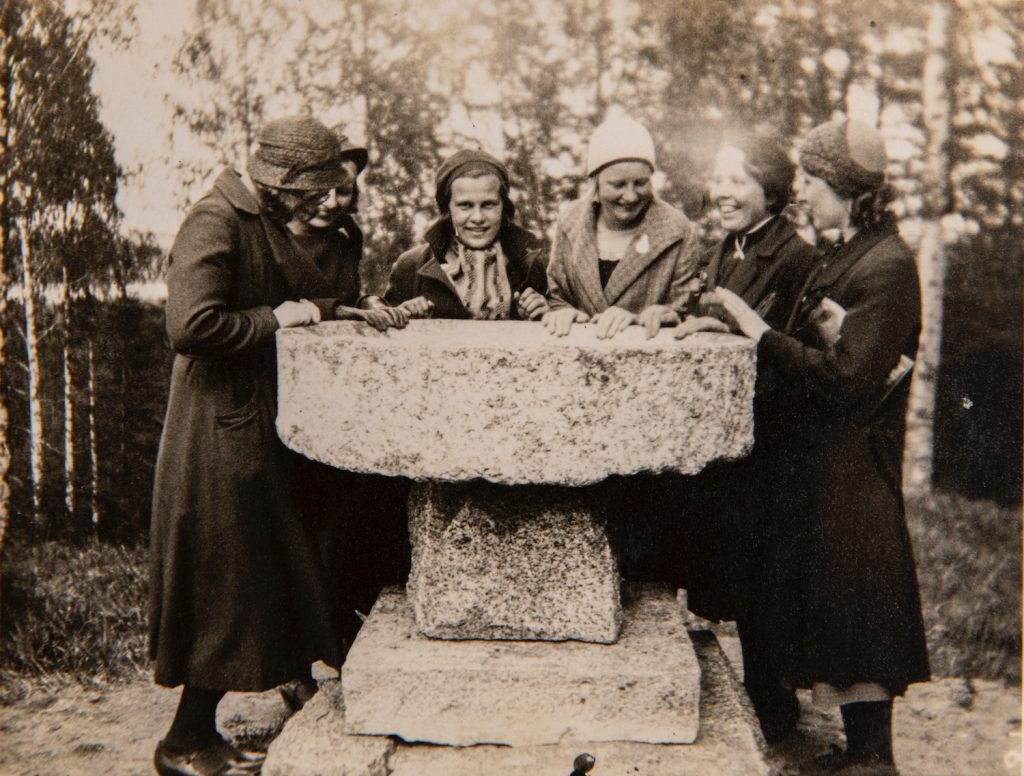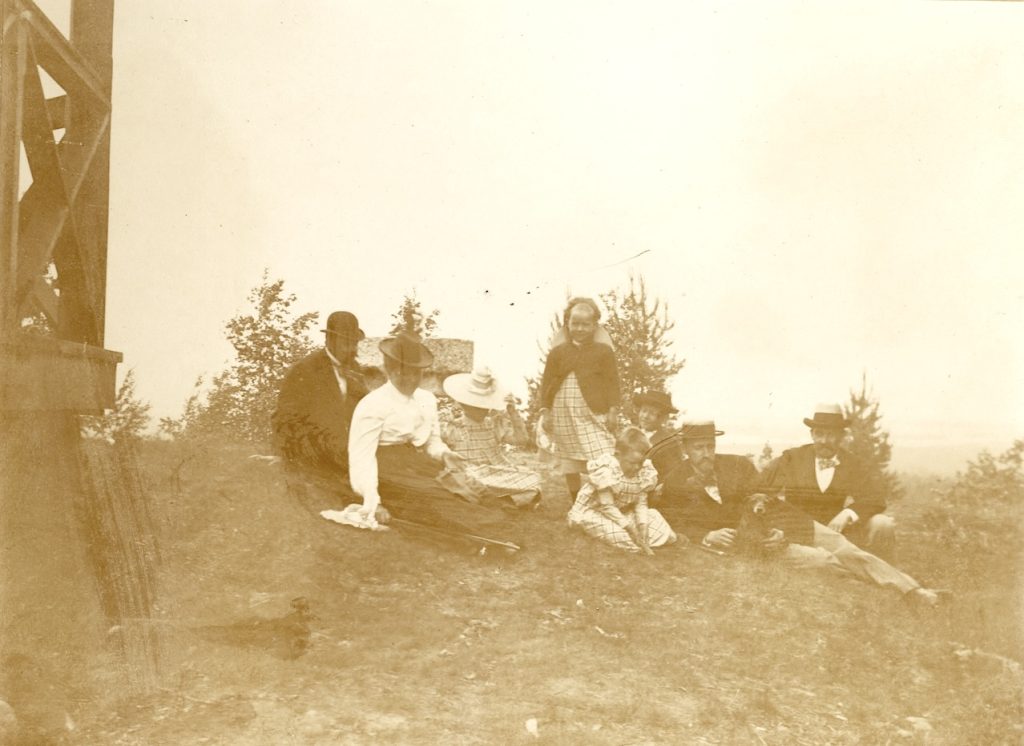Mänttä Mountain Goblet – A Centrepiece in Photographs and Celebrations
FEBRUARY 2025
In the archives of the Serlachius Museums, the heritage collection of the Mänttä Association includes a photo album from the 1930s belonging to Rakel Kataja, who was involved in local heritage activities. In one photograph, six young women, including Rakel herself, are leaning against a large stone goblet on a high hill. Below the photo is the caption “On the Mountain 5. VI. -32”.
Mäntänvuori, or Mänttä Mountain has been a tourist destination, recreational area, and venue for local celebrations since at least the 1880s. The most famous celebration on Mänttä Mountain took place on 17 September 1888, marking the 20th anniversary of the factory founded by G. A. Serlachius. The road leading to Mänttä Mountain was decorated with multicoloured flags and two honorary gates for the occasion. The factory workers carried G. A. Serlachius in a chair up to the hilltop, where he gave a speech. Refreshments were served from a massive stone bowl. The national newspaper Uusi Suometar reported on the celebration on 22 September 1888 as follows:
“As darkness fell, the hilltop was illuminated with multicoloured lanterns, and a beautiful fireworks display was set off. Guests were treated to refreshments from an unusually large bowl, which holds about 17 pitchers and remains immovable on the hilltop; it is made from a millstone placed on a stone base and, with its stand, resembles a goblet.”
In the same year, the Finnish Tourist Association’s publication Matkansuuntia Suomessa 1888 [Travel Directions in Finland 1888] described Mänttä Mountain: “On the hill, there is now a newly rebuilt old viewing platform, whose walls and pillars are inscribed with the names of countless visitors. Slightly lower in the valley on the eastern side is a leafy bower with seating and tables, and nearby a small babbling brook, whose good clear water is a refreshing drink”.
Tourism in the 19th century was largely based on admiring natural sights and landscapes. In keeping with the romantic spirit of the time, significant viewpoints were often equipped with observation towers. In 1895, a 15-metre-high observation tower was completed on Mänttä Mountain. According to the regional newspaper Tampereen Uutiset on 19 April 1895, the architect Hagel designed the plans for the tower. The tower became a five-storey building with a large bright hall on the ground floor.
When Rakel Kataja visited Mänttä Mountain with her friends, the old observation tower had already been demolished. Instead, there was a ski lodge on the site, which had a café in the 1930s. The ski lodge, now known as Vuorenmaja, was built in 1916 on the foundation stones of the old observation tower. The plans for the 60th anniversary of G. A. Serlachius Oy (1928) included the construction of the ski lodge and a new observation tower, which was realised according to the original designs by W. G. Palmqvist by the Mänttä Association in 2005. The stone goblet from the celebrations in honour of the founder of the Mänttä factory is now located between the Serlachius Headquarters and Koskelanlampi.
Katri Tolonen
Curator
Sources
Routto, Kaisa (1995): Pirkanmaan näkötornit [The Observation Towers of Pirkanmaa Region]. Tampere University of Technology. Department of Architecture. Diploma Thesis 1995.
Finnish Tourist Association. Matkansuuntia Suomessa 1888 [Travel Directions in Finland 1888]. First Edition of the year. Helsinki, Finnish Literature Society Printing House 1888.
Hedman, Tarja & Sivonen, Pauli (2004): Museo jalkautuu kaupunkiin. Mänttä, Gösta Serlachius Art Foundation.
Mönkkönen, Mauri (1992): Mäntän historia [The History of Mänttä] 1860–1947. The City of Mänttä and the Mänttä Parish.
Newspaper Tampereen Uutiset 19 April 1895.
Newspaper Uusi Suometar 22 September 1888.



